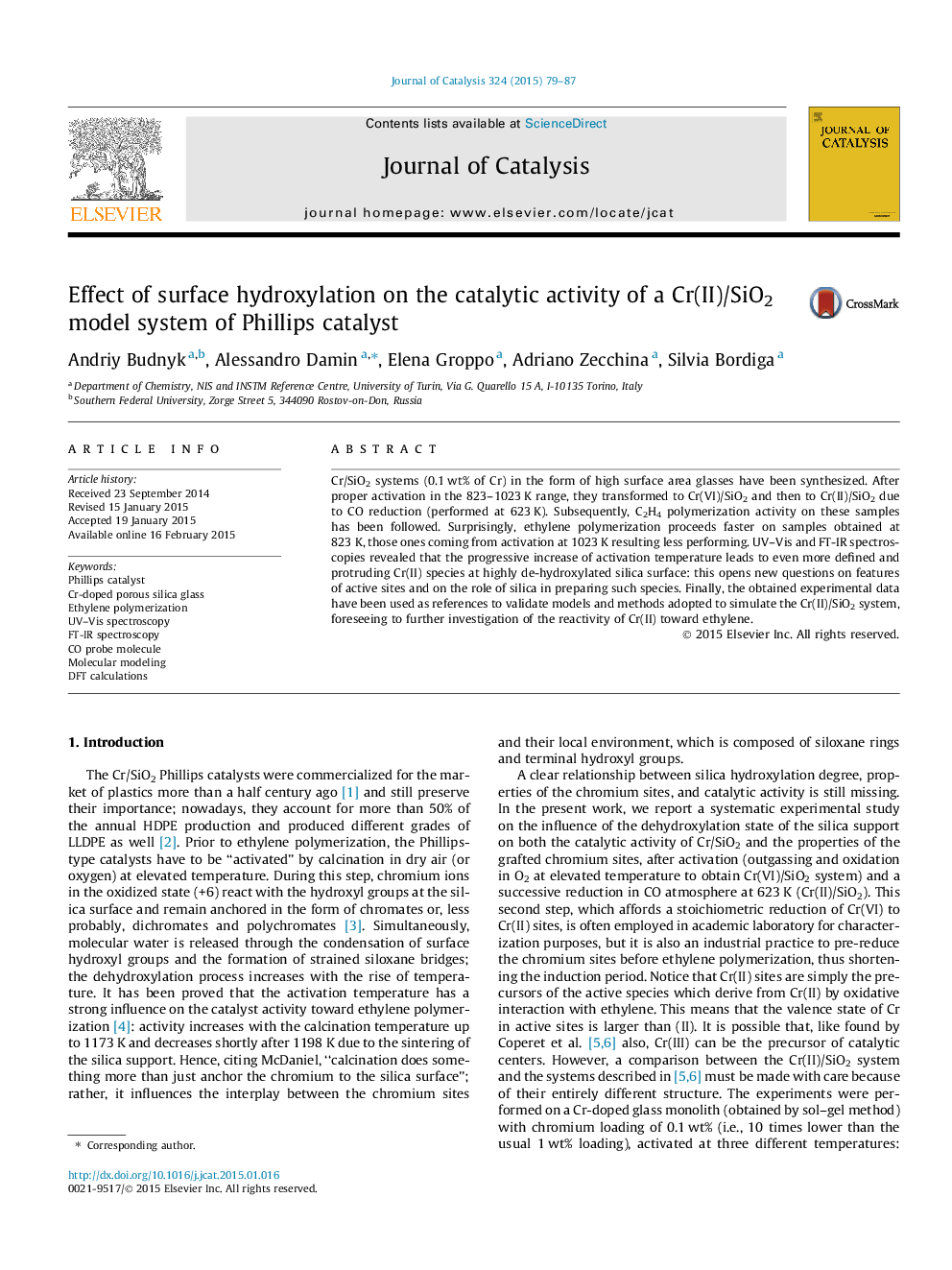| Article ID | Journal | Published Year | Pages | File Type |
|---|---|---|---|---|
| 60911 | Journal of Catalysis | 2015 | 9 Pages |
•Cr/SiO2 porous glasses (0.1 wt% of Cr) were synthesized through sol–gel technique.•Cr(VI)/SiO2 were obtained after outgassing and oxidation in the 823–1023 K range.•RT Cr(II) active systems toward C2H4 polymerization were obtained by CO reduction.•More active systems were obtained from parent ones activated at 823 K.•Computational techniques are able to reproduce the main features of such systems.
Cr/SiO2 systems (0.1 wt% of Cr) in the form of high surface area glasses have been synthesized. After proper activation in the 823–1023 K range, they transformed to Cr(VI)/SiO2 and then to Cr(II)/SiO2 due to CO reduction (performed at 623 K). Subsequently, C2H4 polymerization activity on these samples has been followed. Surprisingly, ethylene polymerization proceeds faster on samples obtained at 823 K, those ones coming from activation at 1023 K resulting less performing. UV–Vis and FT-IR spectroscopies revealed that the progressive increase of activation temperature leads to even more defined and protruding Cr(II) species at highly de-hydroxylated silica surface: this opens new questions on features of active sites and on the role of silica in preparing such species. Finally, the obtained experimental data have been used as references to validate models and methods adopted to simulate the Cr(II)/SiO2 system, foreseeing to further investigation of the reactivity of Cr(II) toward ethylene.
Graphical abstractFigure optionsDownload full-size imageDownload high-quality image (201 K)Download as PowerPoint slide
